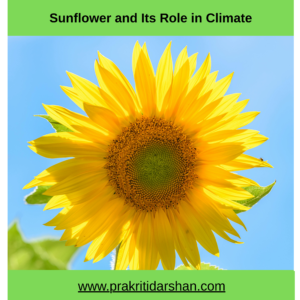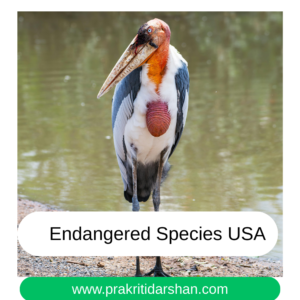Biodiversity conservation is not just about saving animals—it’s about safeguarding the very systems that support life on Earth. This article explores the urgent need to protect endangered habitats and threatened species, examining the roles of wildlife protection, ecosystem services, and sustainable solutions. With climate change and human expansion accelerating ecological loss, conserving biodiversity has become a trending concern in global environmental discourse, especially among students and international academic institutions.
Why “Biodiversity Conservation & Endangered Habitats” Is Important Globally
📈 Academic Focus: Popular topic in biology, ecology, and environmental science courses
🌎 Policy Influence: Global emphasis via the UN’s Convention on Biological Diversity and SDG 15 (Life on Land)
🔥 Climate Crisis: Biodiversity loss is accelerating due to rising temperatures, deforestation, and urban expansion
📚 Student Focused : Increasing interest among university students in sustainable development and climate action
💬 Public Awareness: Viral campaigns . Documentaries (e.g., Our Planet, Planet Earth, Climate concern , endangered species awareness ) have raised consciousness.
Wildlife Protection: Why It Matters
Wildlife is essential to maintaining ecological stability. Every species has a vital function—whether it’s bees enabling crop growth through pollination or wolves maintaining balance by controlling prey numbers. Unfortunately, habitat destruction and poaching have pushed thousands of species to the brink of extinction.
Key Threats to Wildlife:
- Illegal hunting and trafficking
- Habitat fragmentation
- Climate change altering ecosystems
- Invasive species outcompeting natives
Example:
- The Amur Leopard, with fewer than 100 individuals left, is endangered due to habitat loss in the Russian Far East.
🌱 Ecological Balance and Biodiversity: The Interconnected Web
Biodiversity ensures that ecosystems function properly. It provides services like:
- Pollination
- Water purification
- Carbon storage
- Pest control
Loss of one species can trigger a chain reaction affecting many others—a phenomenon known as trophic cascade.
🐢 Threatened Species Around the Globe
| Species | Status | Region | Primary Threat |
| Orangutan | Critically Endangered | Indonesia, Malaysia | Deforestation, palm oil farming |
| Vaquita (Marine mammal) | Critically Endangered | Gulf of California | Bycatch in illegal fishing |
| Javan Rhino | Critically Endangered | Indonesia | Habitat loss, low population |
| Snow Leopard | Vulnerable | Central & South Asia | Poaching, climate change |
Conservation Strategies and Solutions: Safeguarding Nature for the Future
Effective biodiversity conservation requires a multi-dimensional approach combining science, policy, community action, and education. To preserve endangered habitats and protect wildlife, the following five conservation strategies offer scalable, long-term solutions aligned with global sustainability goals.
1️⃣ Protected Areas and National Parks
Protected Areas are the backbone of modern conservation. These include National Parks, Biosphere Reserves, and Marine Protected Areas (MPAs), which serve as safe havens for biodiversity.
- Biosphere Reserves protect both ecosystems and the people who depend on them. Managed under the UNESCO Man and the Biosphere (MAB) Programme, they promote harmony between people and nature.
- Marine Protected Areas (MPAs) safeguard fragile ocean ecosystems from overfishing, plastic pollution, and coral bleaching.
📌 Example: The Great Barrier Reef Marine Park in Australia helps protect one of the world’s richest marine biodiversity zones, hosting over 9,000 known species.
2️⃣ Sustainable Development Practices
Sustainability is central to the conservation of endangered habitats. It promotes responsible use of natural resources without compromising future needs.
- Agroforestry combines agriculture and forestry, enhancing soil health, biodiversity, and crop resilience.
- Eco-tourism generates income for local communities while encouraging habitat preservation.
- Green Infrastructure—such as rain gardens, green roofs, and permeable pavements—reduces urban heat islands and stormwater runoff.
📌 Example: Costa Rica’s eco-tourism model balances forest conservation with local economic development, making it a global sustainability benchmark.
3️⃣ Community-Based Conservation
Community-Based Conservation (CBC) recognizes that local and indigenous people are the best stewards of their environment. Empowering them through education, funding, and policy incentives strengthens conservation efforts.
- Communities manage forest areas, wetlands, and wildlife corridors through traditional knowledge.
- CBC creates jobs, ensures resource rights, and reduces conflict between conservationists and local populations.
📌 Example: The Chipko Movement in India demonstrated how grassroots activism can protect forests and set a global precedent for eco-activism.
4️⃣ Restoration Ecology
Where damage has occurred, Restoration Ecology helps repair ecosystems, making them functional and biodiverse once again.
- Reforestation and afforestation rebuild lost forest cover, improving carbon capture and wildlife habitats.
- Wetland restoration revives essential services such as water purification and flood control.
- Coral reef rehabilitation strengthens marine ecosystems vulnerable to climate change.
📌 Example: China’s Loess Plateau Project transformed a degraded region into fertile land through large-scale ecological restoration.
5️⃣ Education and Awareness
Lasting change begins with environmental education and public awareness. Instilling eco-consciousness from a young age encourages lifelong stewardship.
- Schools can integrate biodiversity modules into curricula to foster understanding and action.
- Campaigns, documentaries, and digital media can spark global movements and behavioral shifts.
- Influencers, educators, and students play key roles in amplifying conservation messages.
📌 Example: Greta Thunberg’s global climate campaign shows. How education and climate campaigns and awareness can mobilize millions for environmental causes .
🌎 Final Thought
These conservation strategies and solutions work best when implemented together. Protected areas safeguard what’s left, sustainable development prevents further damage, community efforts bridge knowledge and action, restoration revives degraded spaces, and education ensures a more informed, responsible future.
By embracing these pillars of biodiversity conservation, we can protect not just species and habitats, but the intricate systems that support life on Earth.
Ecosystem Services: What Nature Does for Us
| Ecosystem Service | Examples | Benefit | |
| Provisioning | Food, freshwater, timber | Human survival | |
| Regulating Services | Climate regulation, role in disease control | Health and stability of all | |
| Supporting | Soil formation, nutrient cycling | Long-term productivity | |
| Cultural | Recreation, spiritual value, tourism | Mental well-being, economy |
✅ Conclusion: A Call to Action
Biodiversity conservation is no longer optional—it’s essential. Protecting endangered habitats and species isn’t just about preserving beauty; it’s about sustaining life. Whether you’re a student, policy-maker, or nature lover, your role in promoting biodiversity counts. Through informed choices, activism, and education, we can reshape our relationship with nature for a better, greener future.
❓ Frequently Asked Questions (FAQs)
1. What is biodiversity conservation?
Answer: It involves the protection and careful management of Earth’s diverse life forms—ranging from animals and plants to entire ecosystems and their genetic variations.
2. Why is biodiversity important?
Answer: Biodiversity maintains ecological balance and provides essential resources. It supports climate resilience and human well-being.
3. What are endangered habitats?
Answer: These are ecosystems at risk of being destroyed or severely degraded, such as coral reefs, rainforests, and wetlands.
4. What causes habitat loss?
Answer: Major causes are deforestation, urbanization and pollution. Mining and agricultural expansion or expansion of cities in National Park or towards forest .
5. What are examples of critically endangered species?
Answer: Amur Leopard, Javan Rhino, Vaquita, and Mountain Gorilla.
6. How does climate change affect biodiversity?
Answer: It alters habitats, disrupts food chains, and increases the vulnerability of species to extinction.
7. What is an ecosystem service?
Answer: Benefits provided by ecosystems to humans, such as clean air, water, pollination, and climate regulation.
8. What can students do to protect biodiversity?
Answer: Join local conservation groups, reduce waste, spread awareness, and support eco-friendly policies.
❓ Frequently Asked Questions (FAQs)
9. What are some global efforts for conservation?
Answer: The Convention on Biological Diversity (CBD), Ramsar Convention, and UNESCO Biosphere Reserves.
10. How is technology helping conservation?
Answer: Tools like satellite monitoring, AI-based wildlife tracking, and drones aid habitat and species protection.
11. What is rewilding?
Answer: A conservation strategy that involves reintroducing native species and restoring natural processes in ecosystems.
12. How are indigenous communities involved in biodiversity protection?
Answer: They contribute traditional knowledge and often manage some of the most biodiverse regions on the planet.
13. Is biodiversity linked to human health?
Answer: Yes, healthy ecosystems help prevent pandemics and provide medicinal resources.
14. What are biodiversity hotspots?
Answer: Regions with exceptional species richness that are under severe threat, like the Amazon, Himalayas, and Madagascar.
15. Can biodiversity conservation reduce poverty?
Answer: Yes, through sustainable livelihoods like eco-tourism, organic farming, and community-based resource management.
📚 References
- Convention on Biological Diversity (CBD): https://www.cbd.int
- IPBES Global Assessment Report on Biodiversity and Ecosystem Services, 2019
- IUCN Red List of Threatened Species: https://www.iucnredlist.org
- UN Sustainable Development Goals: https://sdgs.un.org/goals
- WWF Living Planet Report: https://www.worldwildlife.org
PRAKRITI DARSHAN-NATURE AND ENVIRONMENT MAGAZINE
Prakriti Darshan is a leading Hindi-language magazine and digital platform dedicated to raising public awareness on vital issues related to nature, biodiversity, climate change, sustainable development, and environmental conservation. This magazine represents a unique blend of science, society, and sensitivity—offering a common platform for researchers, students, NGOs, policymakers, nature lovers, and conscious citizens alike.
With thought-provoking articles, inspiring stories, environmental research, impactful projects, and policy perspectives, Prakriti Darshan is a transformative journey toward a greener and more sustainable future.
Let us come together to protect and preserve our planet for generations to come. 🌿🌍
Join us in our mission to protect and celebrate the planet. 🌏💚
Click for more information
- Visit www.prakritidarshan.com for Free Magazine ,Free membership benefits ,offered price magazine @ Rs.1 or Rs.11 only and more ……
- 🎗️Sponsor Prakriti Darshan Magazine – Support our environment mission.
- 📚 Explore the Environment Magazine – Read our latest and past issues.
- ✍️ Read Editor’s Article or Blog – Insightful thoughts from our editorial desk.
- 🌱 Join Membership – Be part of India’s leading green community.
- 🤝 Become an NGO Impact Story Partner – Share your grassroots impact nationwide.
- 🏢 Become a Company Partner – Showcase your CSR, ESG, or sustainability work.
- 👤 Become an Individual Partner – Volunteer, write, and raise your green voice.
- 📢 Advertise with Us – Reach eco-conscious readers across India.
- Eco Trails Newsletter
- Donate for “Hari Ho Vashundhara & Har school Hariyali “ Plantation campaign Associated Partner NGO :GDSS NGO www.gdssngo.org
BALA DATT SHARMA,
MANAGING EDITOR ,
PRAKRITI DARSHAN-NATURE AND ENVIRONMENT MAGAZINE
- Indoor Plants – Money Plants – Benefits, Care & Top 15 Plants with Special Focus on Money Plants - September 12, 2025
- Sunflower and Its Role in Climate: A Comprehensive Study on Uses, Benefits, and Global Importance - September 12, 2025
- Endangered Species USA – Conservation Challenges, Data, and Future of Wildlife - September 11, 2025







